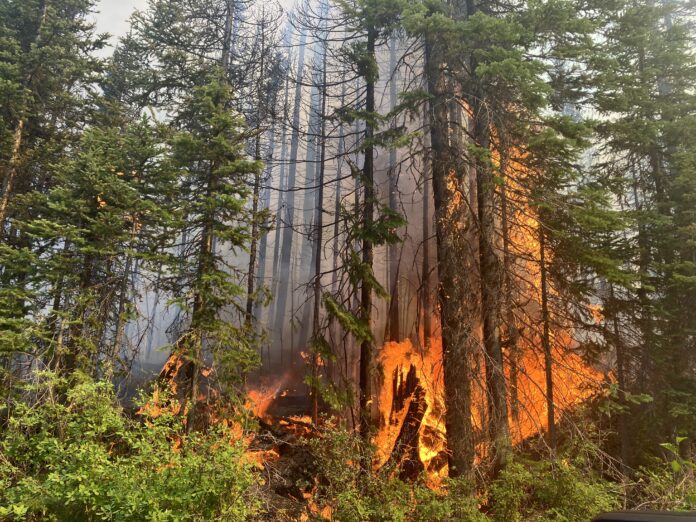The BC Wildfire Service will have access to new technology to help crews better predict fire movement and growth.
The announcement comes ahead of the 2024 wildfire season.
“As the impacts of climate change evolve, so too must our ability to manage the threat of wildfires in our communities,” said Bruce Ralston, Minister of Forests.
“During a wildfire, every second counts as wildfire professionals deploy aircraft and firefighters to tackle blazes. By adding more technology to the BC Wildfire Service’s tool kit, our talented firefighters will be able to make critical decisions faster when it matters most.”
B.C. officials said the tech can produce real-time wildfire behaviour predictions and integrate information from the field.
However, the new system will not be available in the southeast district right away.
“The wildfire predictive technology will first be introduced in the Coastal and Kamloops Fire Centres, where it has already been trialled to ensure compatibility with forest and fuel conditions,” said B.C. government officials.
“Following continued trials, refinements and staff training, B.C.’s remaining four regional fire centres will phase in the new wildfire predictive technology throughout 2024.”
The predictive technology will not replace the skills of BC Wildfire Service staff.
This tool will provide more information to decision-makers, giving them more resources to plan their operations and give crews an opportunity to act more proactively.
“Wildfire growth modelling works by using data from weather models, topography and fuel maps. The technology being implemented by the BC Wildfire Service includes the ability to use existing geospatial data and fuel maps but also uses an app-based interface to allow for on-the-ground inputs in real-time,” said B.C. government officials.
“The technology includes an interface for field staff, operational decision-makers and fire behaviour specialists who each have a unique role to play in forecasting, resource planning and fighting wildfires.”
Officials said collaboration with other jurisdictions using similar technology helped the B.C. government roll out this new tool relatively quickly.
“The availability of a common operating picture when facing rapidly evolving emergencies can be the difference between life and death,” said Thom Porter, task force member and former director of the California Department of Forestry and Fire Protection.
“I’ve experienced first-hand the power of technology to transform the way response organizations work together to reduce impacts on communities and natural values. British Columbia’s investment in predictive technologies and sharing information among responders is an investment that will save lives, property and the environment in 2024 and beyond.”
B.C. officials said the Wildfire Service is also testing out other tech, such as using drones for aerial ignitions, infrared scanning for hazard assessments, and using 5g to monitor forest conditions.
“The BC Wildfire Service is also taking action to improve firefighter safety, including better testing of carbon monoxide exposure and respiratory protective equipment,” said B.C. government officials.


